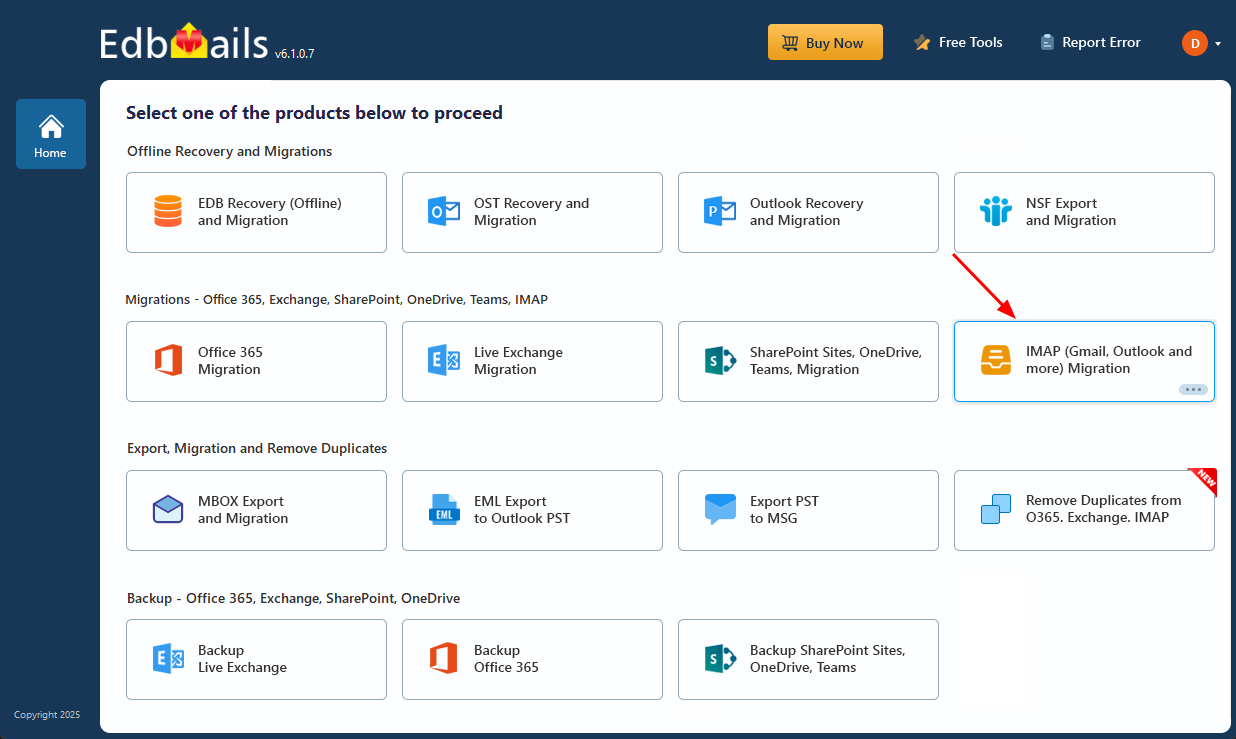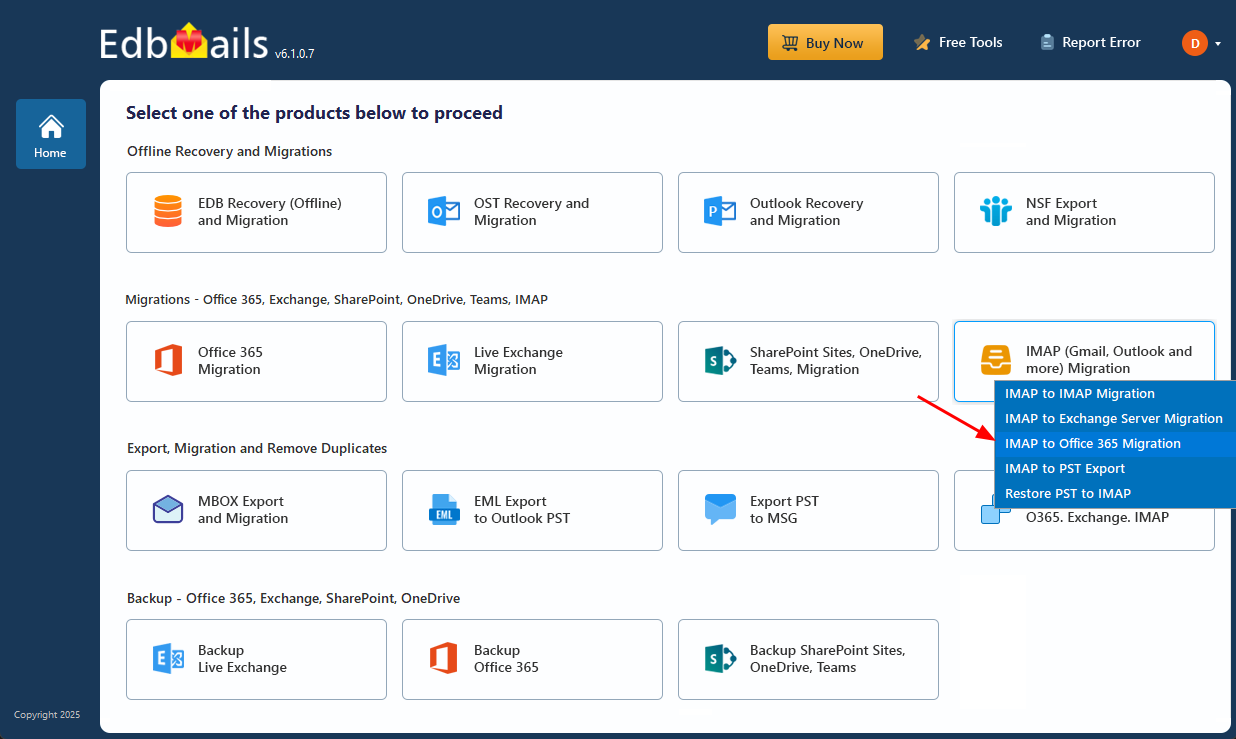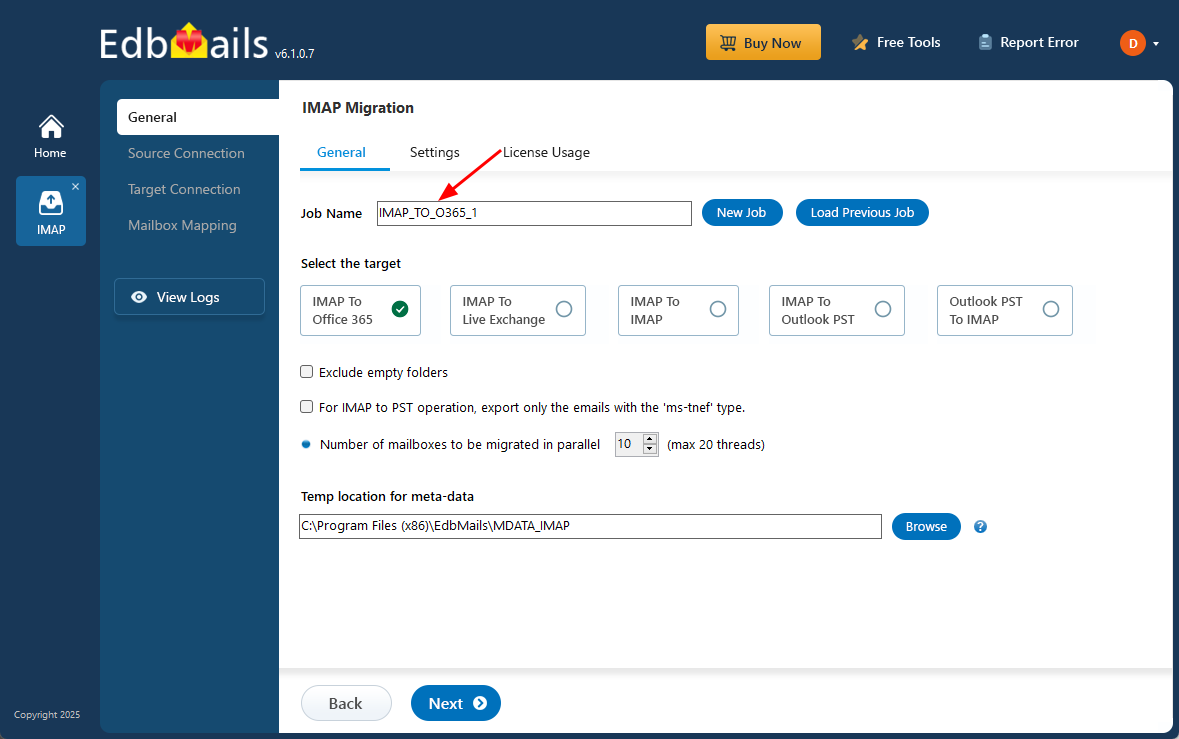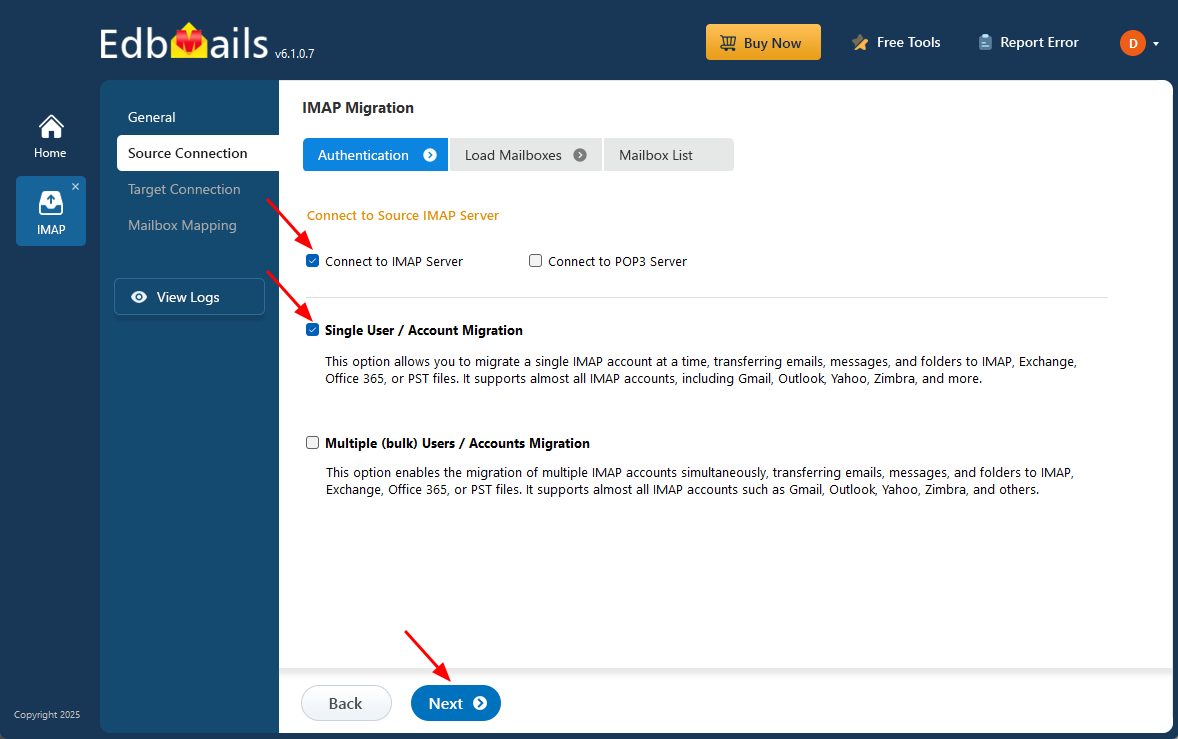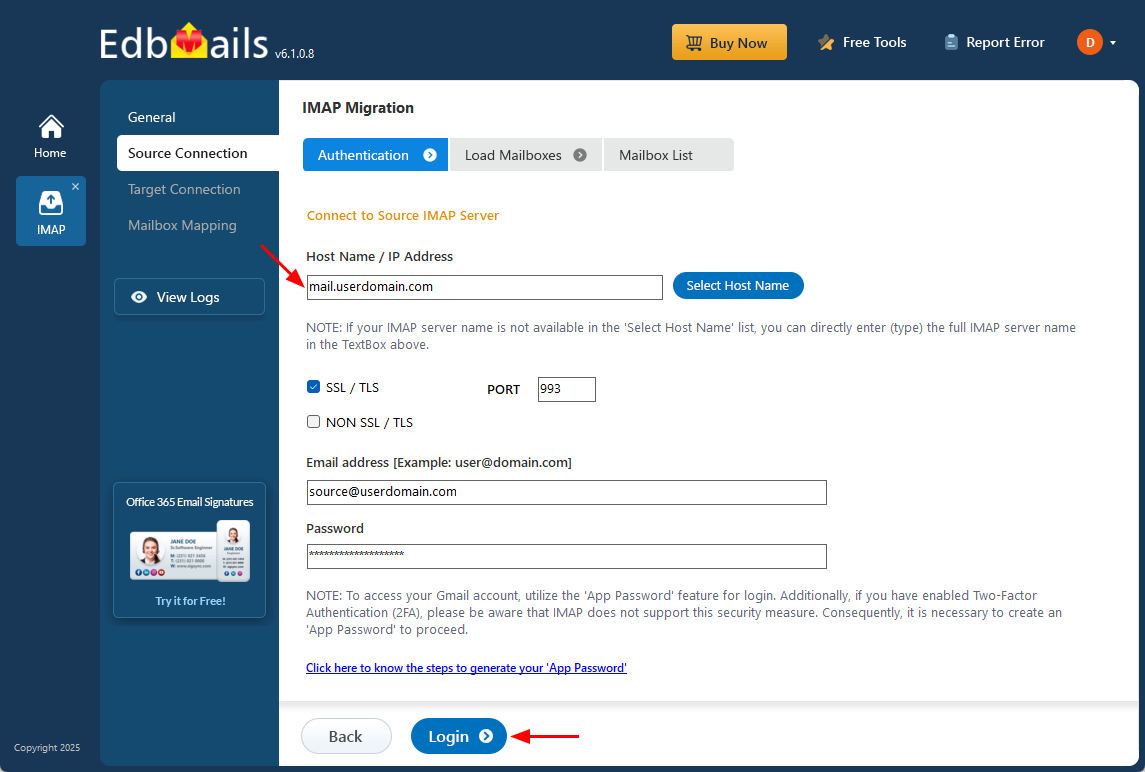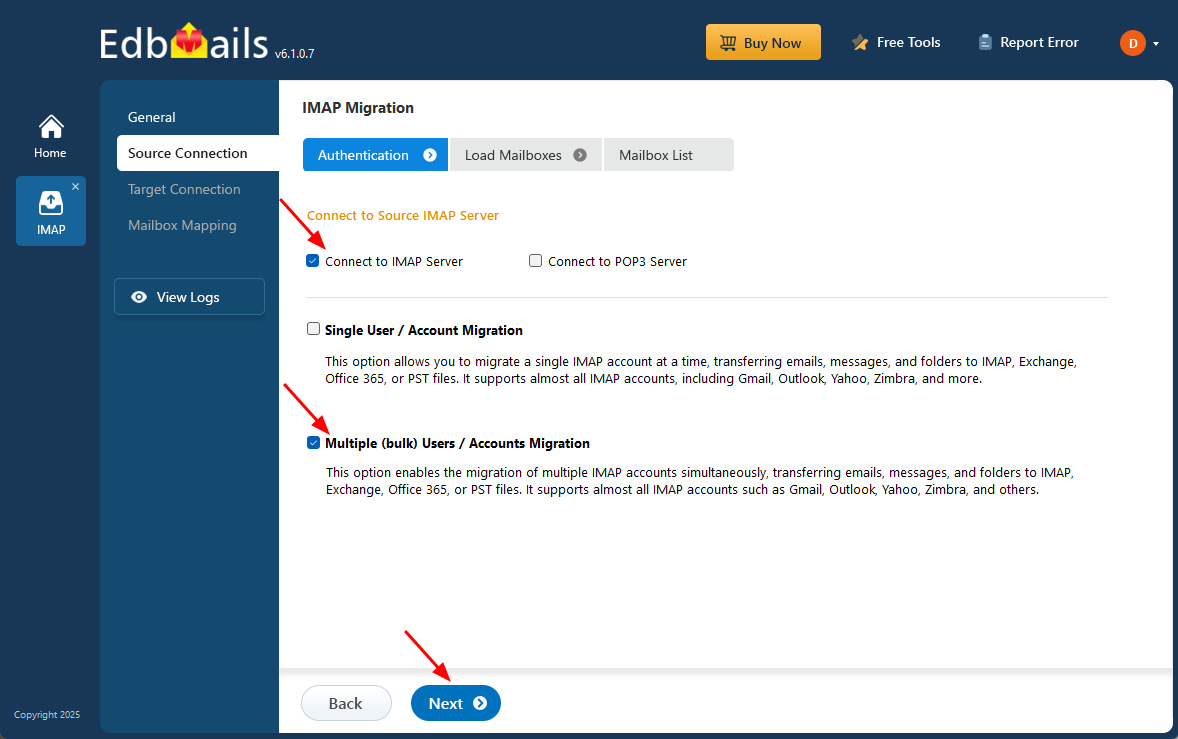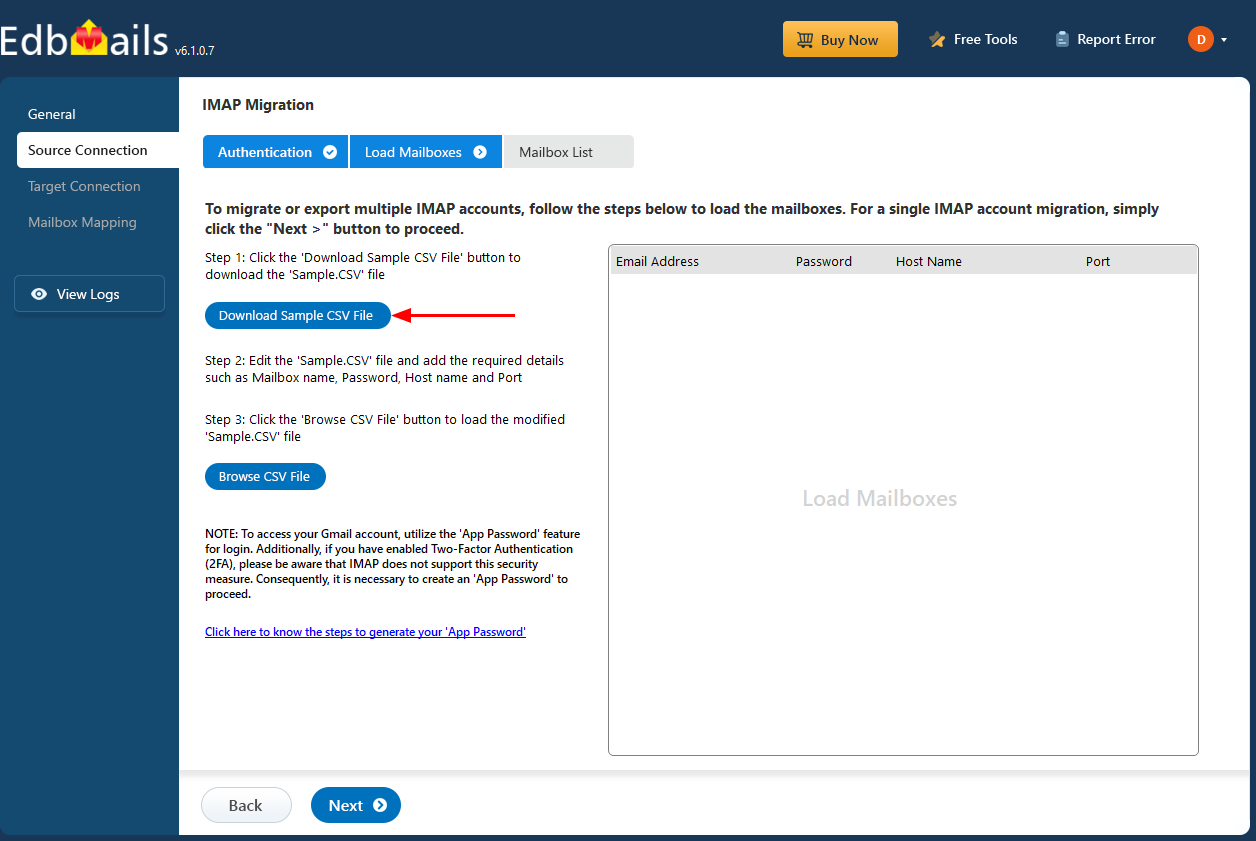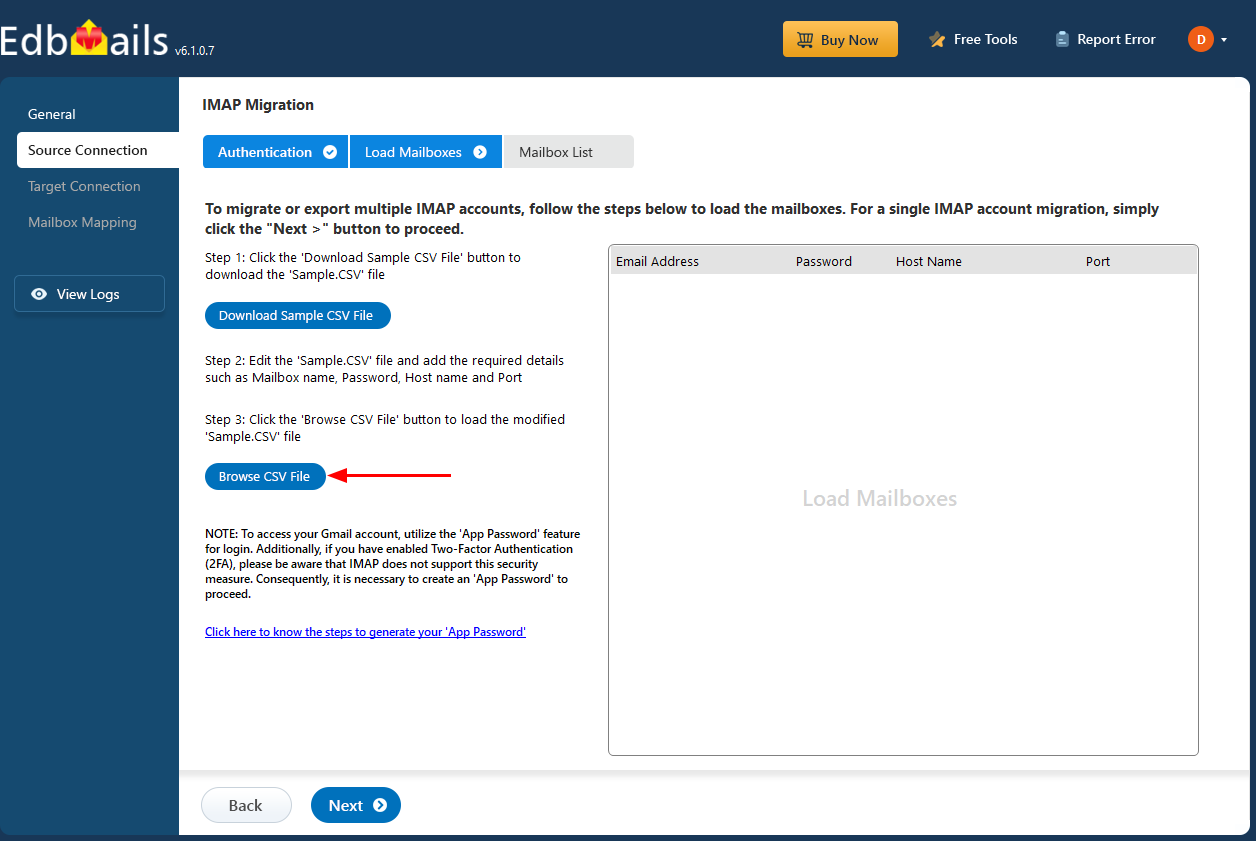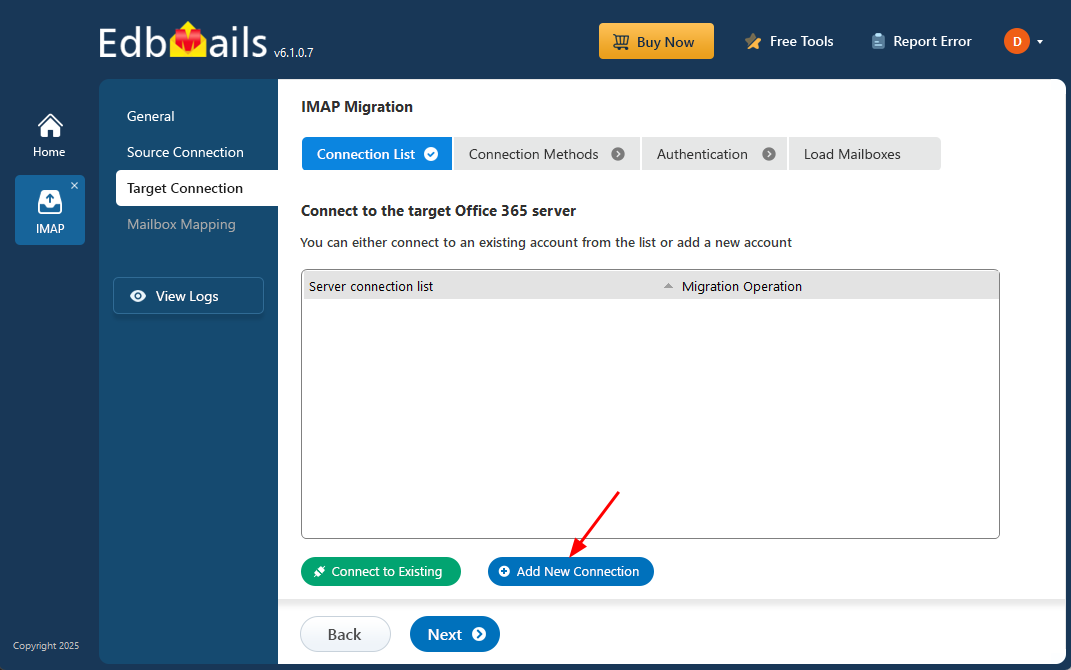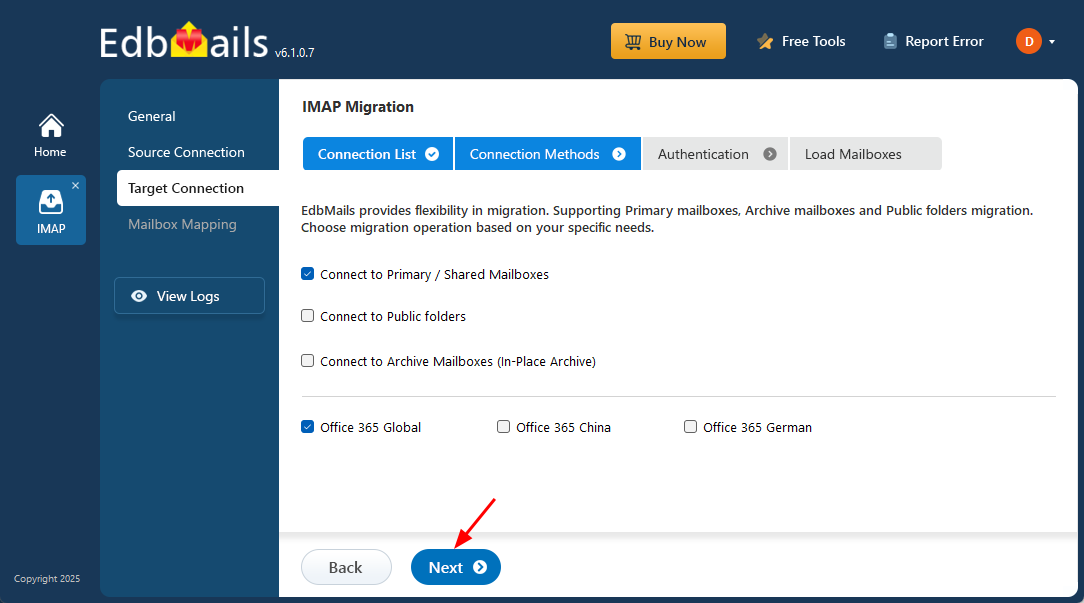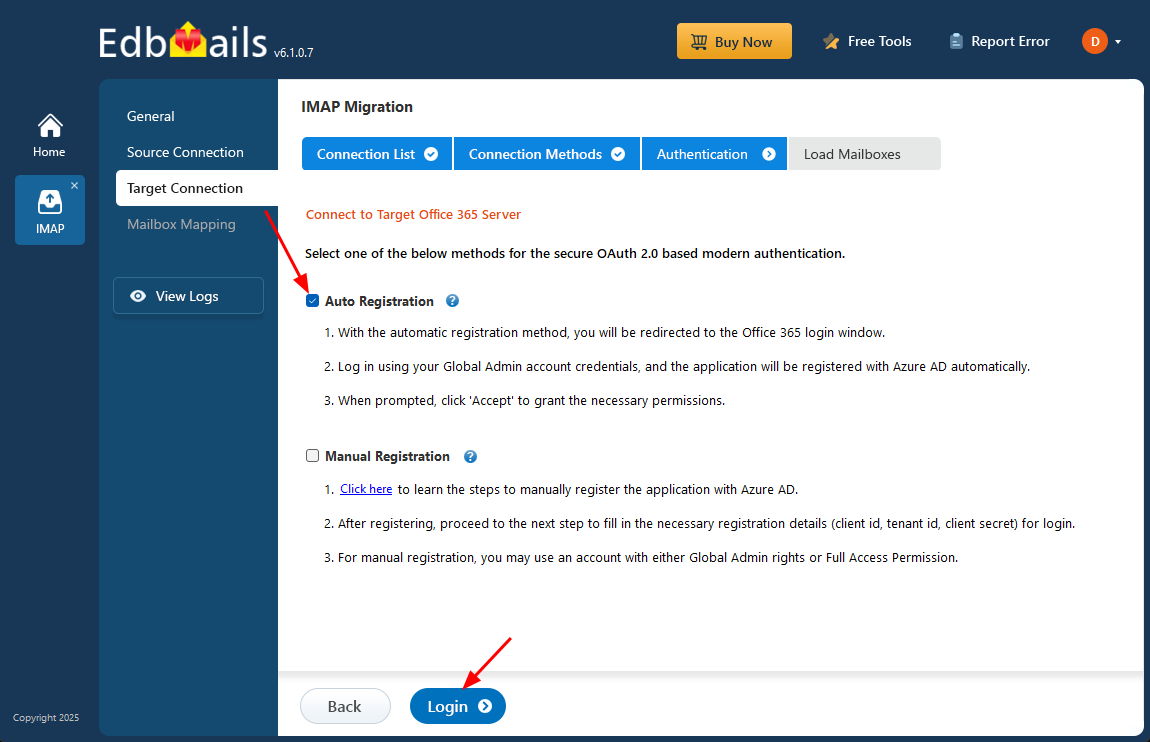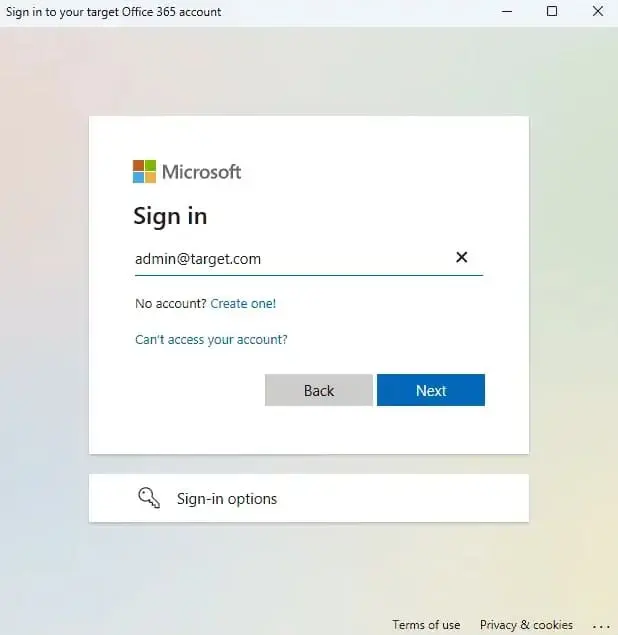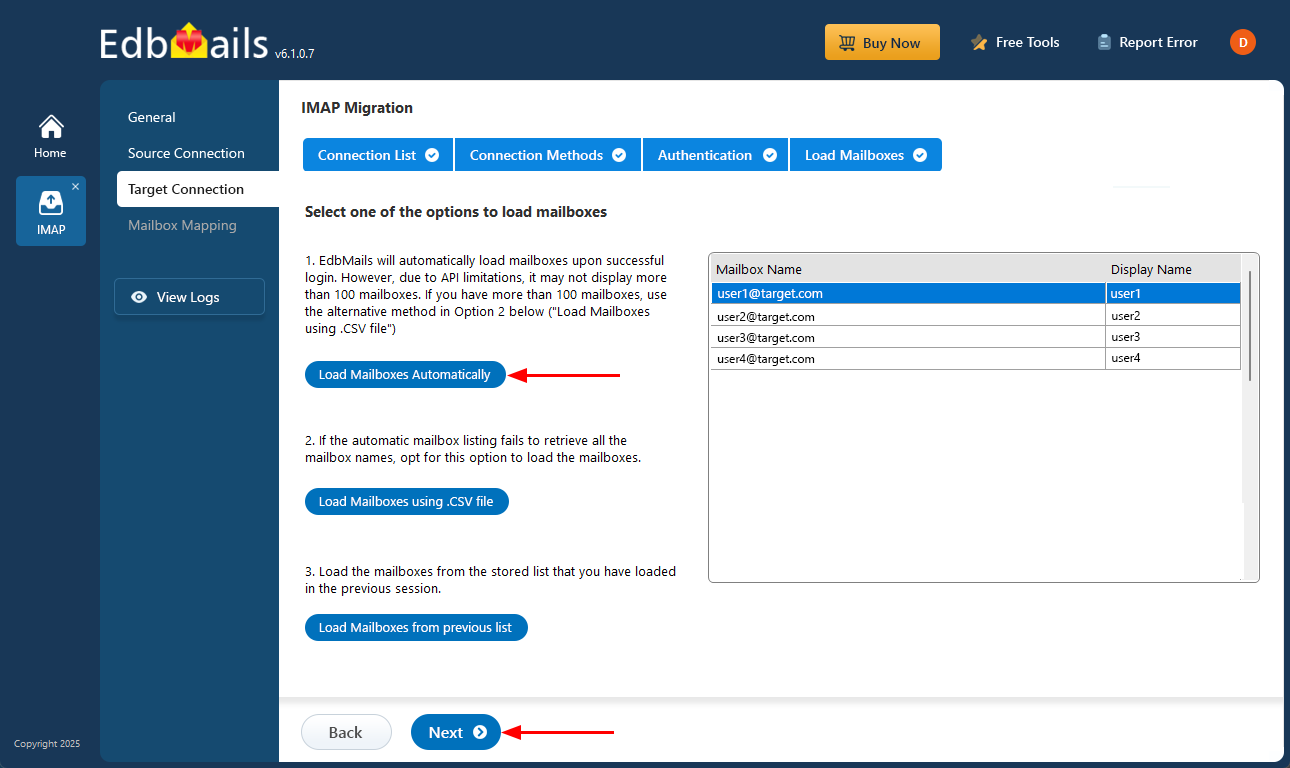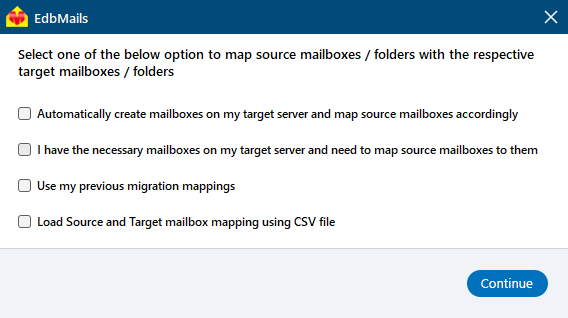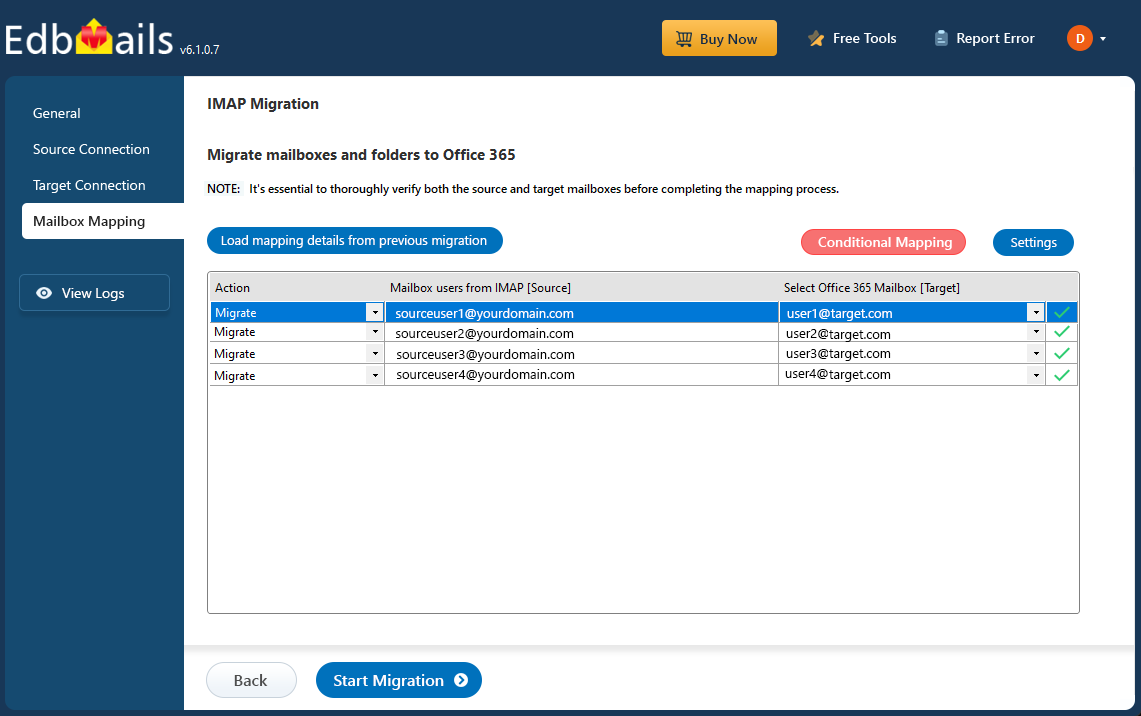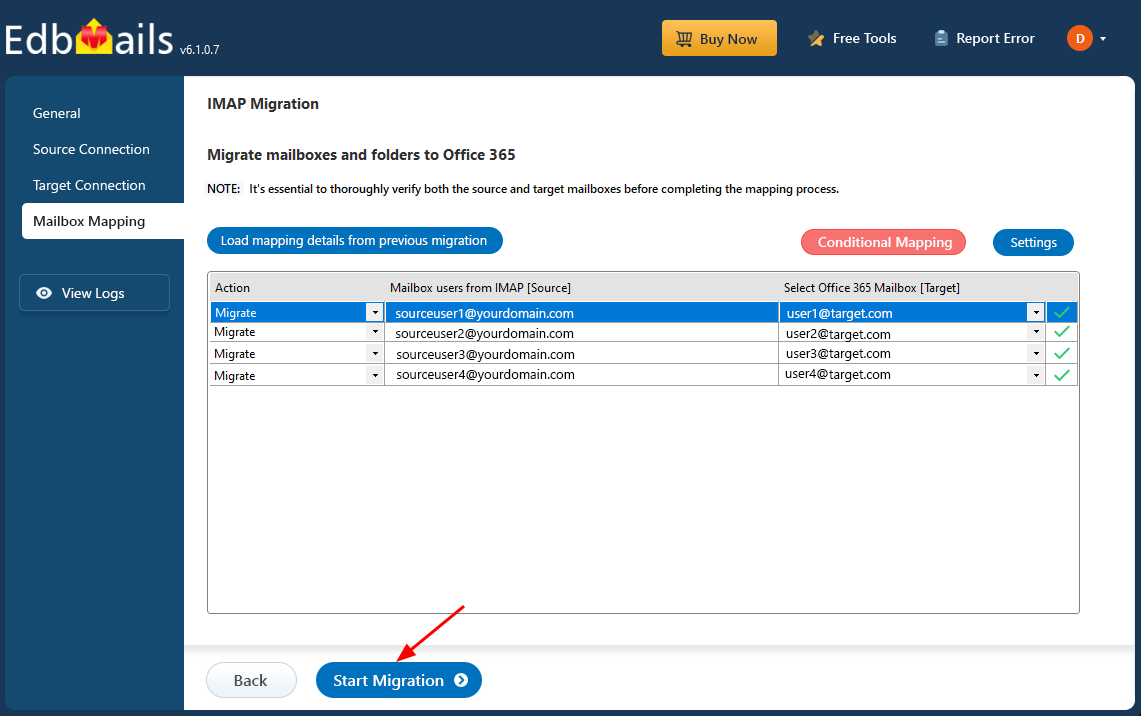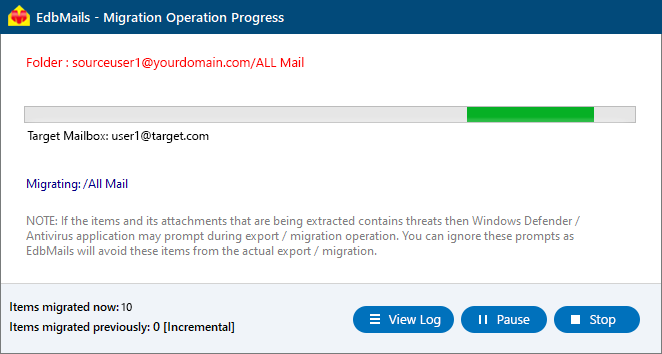cPanel to Office 365 migration
Are you looking to migrate emails from cPanel to Office 365? cPanel is a widely used web hosting control panel that simplifies email management through a user-friendly interface. It supports integration with email clients like Outlook and Thunderbird via IMAP, as well as web-based clients such as Roundcube or Horde. Additional features include autoresponders, email forwarding, routing, global filters, and email deliverability tracking.
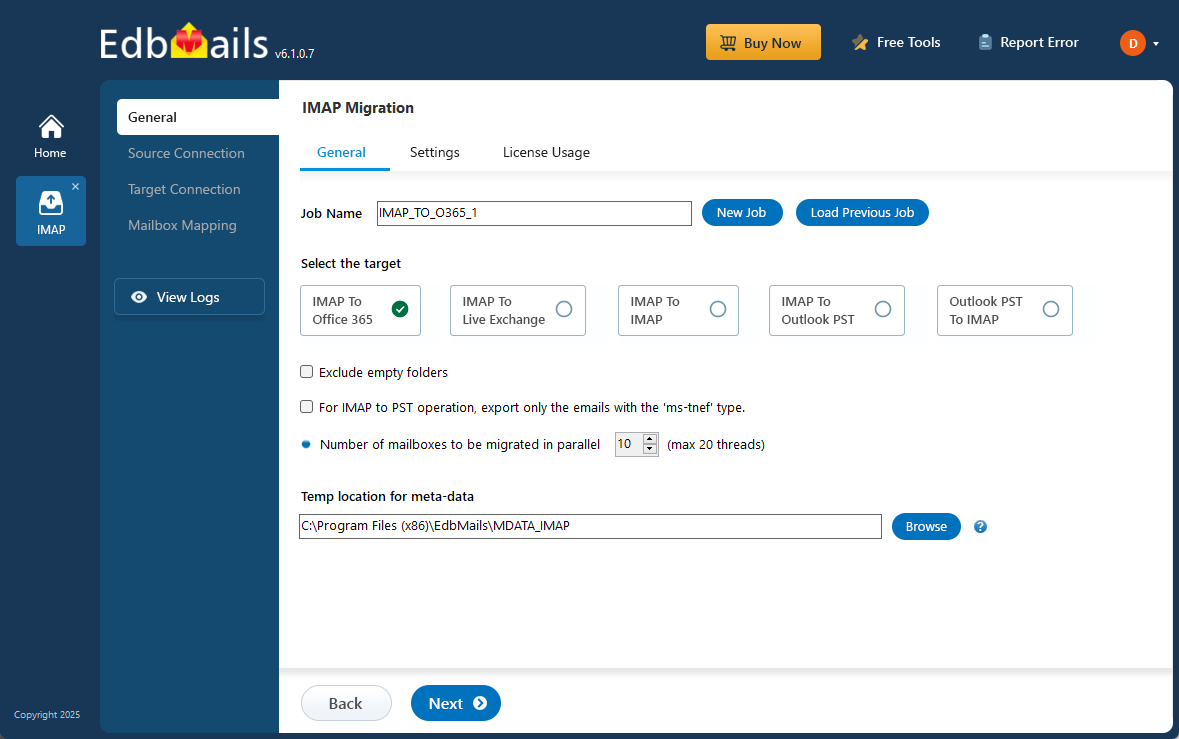
As businesses grow, migrating from cPanel to Office 365 becomes essential to take advantage of enhanced scalability and advanced productivity features that support organizational goals. The EdbMails IMAP Migration Tool streamlines this process, providing a secure, efficient, and hassle-free transition to Office 365. No technical expertise is required to perform the migration. EdbMails ensures zero downtime, prevents data loss, and maintains consistent data formatting between the source and target environments. Whether you are migrating personal mailboxes or enterprise-level data, EdbMails delivers a reliable and seamless migration experience to Office 365.
Top reasons to migrate emails from cPanel to Office 365
- 1. Enhanced data security
Migrating to Office 365 with EdbMails ensures robust data security, leveraging advanced encryption, threat protection, and compliance features.
- 2. Premium Office applications
Office 365 offers access to premium applications like Word, Excel, and PowerPoint, streamlining document creation and collaboration. These tools are integrated seamlessly into your email environment for enhanced productivity.
- 3. Streamlined subscription sharing
With Office 365, businesses can efficiently share subscriptions and manage multiple user licenses, ensuring flexibility in scalability and streamlined access to services across the organization without administrative complexity.
- 4. Cross-platform compatibility
Office 365 supports seamless cross-platform integration, allowing access from Windows, and mobile devices. This ensures a consistent and accessible experience for teams working across diverse devices.
- 5. Collaborative tools
Office 365 provides powerful collaboration tools like Teams, SharePoint, and OneDrive, enabling real-time communication and file sharing. These tools enhance teamwork and drive efficiency within businesses, improving overall workflow.
- 1. Enhanced data security
Challenges in cPanel to Office 365 migration
- Data mapping inconsistencies: Ensure accurate transfer of emails and folders without data loss or misalignment between cPanel and Office 365.
- Email format compatibility: Resolve formatting and attachment issues caused by differences between email systems.
- Downtime minimization: Ensuring zero downtime during migration, especially when handling large data volumes.
- User account synchronization: Properly sync user accounts, permissions, and settings to prevent access issues after migration.
- Email forwarding and routing: Managing forwarding and routing settings to ensure smooth email flow and prevent misrouting.
cPanel to Office 365 migration prerequisites
- The following are the pre-migration activities for migrating cPanel to Office 365
- Make sure you have admin access on the source and target server The admin account that has all the necessary permissions to migrate mailboxes on behalf of all the users in your organization. Assign the global administrator rights to the user in cPanel. Also assign the Organization Management role group and impersonation rights to the admin user on Office 365.
- Purchase a suitable Office 365 licensing plan. You can also sign up for a 30 day free trial and decide to go with a suitable one later. Compare Office 365 business plans and Compare Office 365 enterprise plans
- Create Office 365 mailboxes and assign licenses to them
Add users and assign licenses to Office 365 users
Assign Microsoft 365 licenses to user accounts - If you plan to migrate your mailboxes to Office 365 Public folders, ensure that you create and configure the Public folder mailboxes on the target server.
Create Office 365 Public folder and assign mailbox user - Similarly, if you want to migrate mailboxes to Office 365 In-Place archive, enable them from the admin center.
enable archive mailbox in Microsoft 365. - If you have a custom email domain from the source which you want to retain and receive emails to, you must add and verify the domain on Office 365.
- If you are in plan to migrate mailboxes to Office 365 archive mailboxes, ensure to enable In-Place archive in Office 365 admin center.
Steps to add a custom domain to Office 365 and steps to add DNS records to connect your domain. - Configure Office 365 to send and receive large messages.
Follow the steps to increase the message size on Office 365to 150MB.
See message size limits on Office 365 for more information.
Steps to migrate from cPanel to Office 365 using EdbMails
Step 1: Download and install EdbMails IMAP migration application
- Download EdbMails and install the application on any computer running on Windows OS.
- Launch the application and click 'Login' or 'Start Your Free Trial'.
See a detailed list of EdbMails system requirements for IMAP migration.
- Select the option ‘IMAP (Gmail, Outlook & more) Migration’.
- Select ‘IMAP to Office 365 Migration’.
- Use the default job name or select 'New Job' to customize the name.
Step 2: Connect to source cPanel server
- To migrate a single user account, choose ‘Single User / Account Migration.’ Next, select the desired protocol, like ‘Connect to IMAP’ or ‘Connect to POP3,’ and click ‘Next’ to move forward.
- Choose the correct IMAP host name from the list or manually enter it (e.g., mail.yourdomain.com). Then, fill in your email address, password.
- Click the ‘Login’ button.
- For migrating multiple cPanel mailboxes, select ‘Multiple (Bulk) Users/Accounts Migration’ and click ‘Next’.
- Click ‘IMAP Migration CSV File’.
- Modify the CSV file with the required details such as email address, password, host name and port number in the CSV file and save the changes.
- Once you've made the necessary changes to the CSV file, save and close it.
- Then, click on the 'Load Modified CSV File' button, find your updated file, select it, and open it to continue.
Step 3: Select the mailboxes or folders to migrate
- Select the mailboxes or specific folders you want to migrate, then click ‘Next’ to proceed with the migration process.
Step 4: Connect to target Office 365 server
- Click the ‘Add New Connection’ button to establish a new connection to the target Office 365. To use the previous connection, select it from the connection list and click the ‘Connect to Existing’ button to proceed.
- Select the required connection options and click the ‘Next’ button.
- Select the authentication method and click the ‘Login’ button to continue.
- Authenticate on Microsoft sign-in page.
- EdbMails allows you to load mailboxes automatically, which is quick and convenient. However, due to Microsoft API limitations, the automatic method can list up to 100 mailboxes at a time. For larger environments or to include specific mailboxes beyond this limit, you can use the CSV file method to load mailboxes manually—giving you full control over the selection process.
- Click the ‘Next’ button to continue.
Step 5: cPanel to Office 365 mailboxes mapping
- Select the required mapping option.
- You can choose to let EdbMails automatically create mailboxes in Office 365 and map them between the source and target servers. This feature is especially useful for large-scale migrations, saving time, reducing manual effort.
Step 6: Start cPanel to Office 365 migration
- After mapping the mailboxes, click the ‘Start Migration’ button to initiate the migration process.
- Click the ‘View Log’ button to view the migration report, which includes mapping details and the total count of migrated emails.
- Login to your target server and verify the items.
cPanel to Office 365 post migration tasks
- Step 1: Update the MX records to point to Office 365
If you have not done this step previously, change the DNS records known as MX records to enable email and receive messages on the target Office 365 server. In addition, configure the Autodiscover record to allow Outlook to connect to the migrated mailboxes.
- Step 2: Create a new Outlook profile for users in the new domain
Configure the Outlook profile for each user in your domain if Outlook has problems connecting to Office 365 mailboxes.
cPanel to Office 365 migration troubleshooting
- For troubleshooting, visit our Knowledge Base.
- For more queries, check Frequently Asked Questions or contact support.
Benefits of EdbMails to migrate email from cPanel to Office 365
- Selective and bulk migration options
EdbMails provides the flexibility to perform both selective and bulk migration from cPanel to Office 365, allowing users to choose specific mailboxes or migrate entire accounts with ease, based on their business requirements.
- Zero data loss assurance
With EdbMails, you can enjoy a seamless migration to Office 365 with zero data loss. All emails, folders, and mailbox items are securely transferred without any risk of corruption or omissions.
- Comprehensive data security
EdbMails ensures that your data is fully protected throughout the migration process. It employs industry-standard encryption protocols and secure authentication methods like OAuth 2.0 and TLS, safeguarding sensitive information during the entire cPanel to Office 365 migration.
- Multi-language folder mapping
EdbMails supports folder mapping in various languages, including English, Dutch, Finnish, German, and French, and more, allowing users from different regions to easily migrate their cPanel emails to Office 365 without language-related complications.
- Advanced filtering capabilities
The advanced filter option enables users to selectively migrate emails based on criteria like date range, sender, recipient, and subject, ensuring that only relevant data is transferred. It also provides the option to exclude unnecessary folders, such as Spam, Junk, or Deleted.
- Preservation of folder hierarchy and email components
EdbMails preserves the original folder structure and all email components, including Bcc, Cc, To, From, Subject, Date, formatting, inline images, signatures, and attachments, ensuring the integrity and consistency of the migrated data in Office 365.



